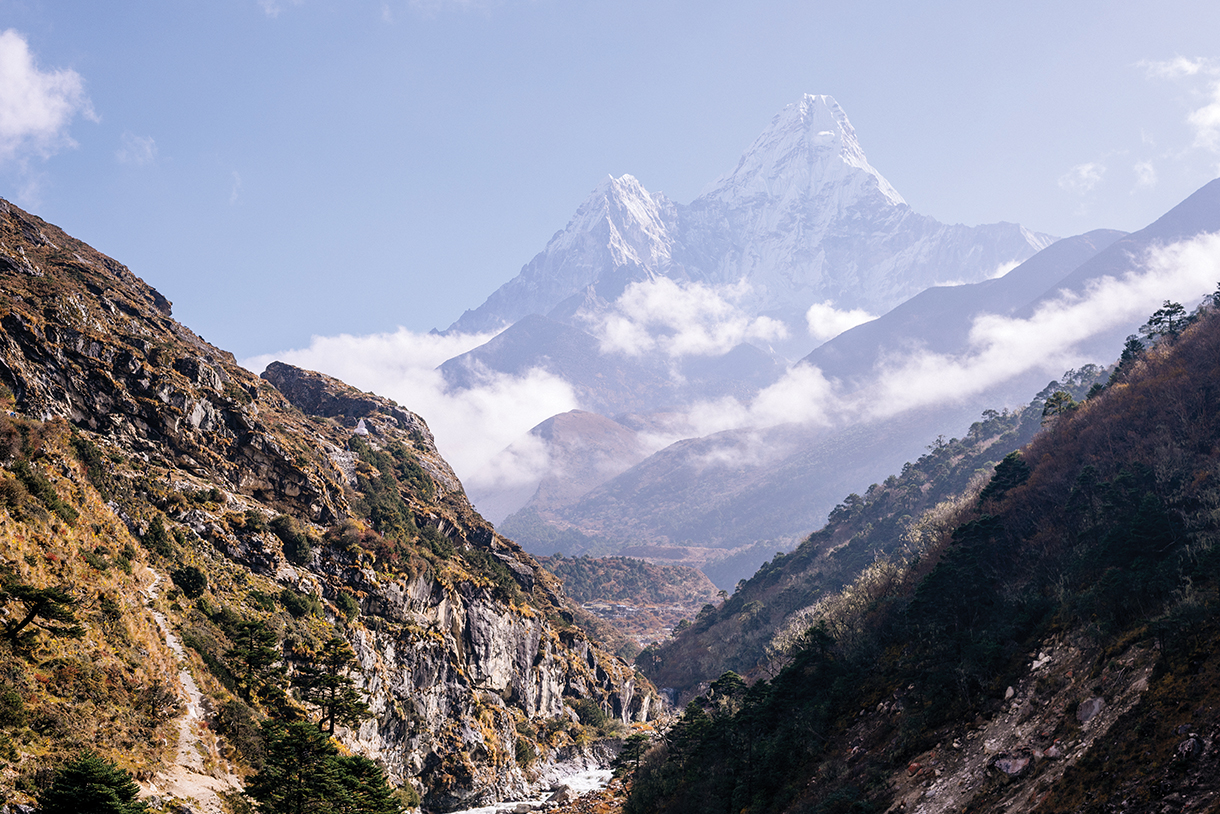
6,000-Meter Himalayan Trekking Peak Climbing Adventures
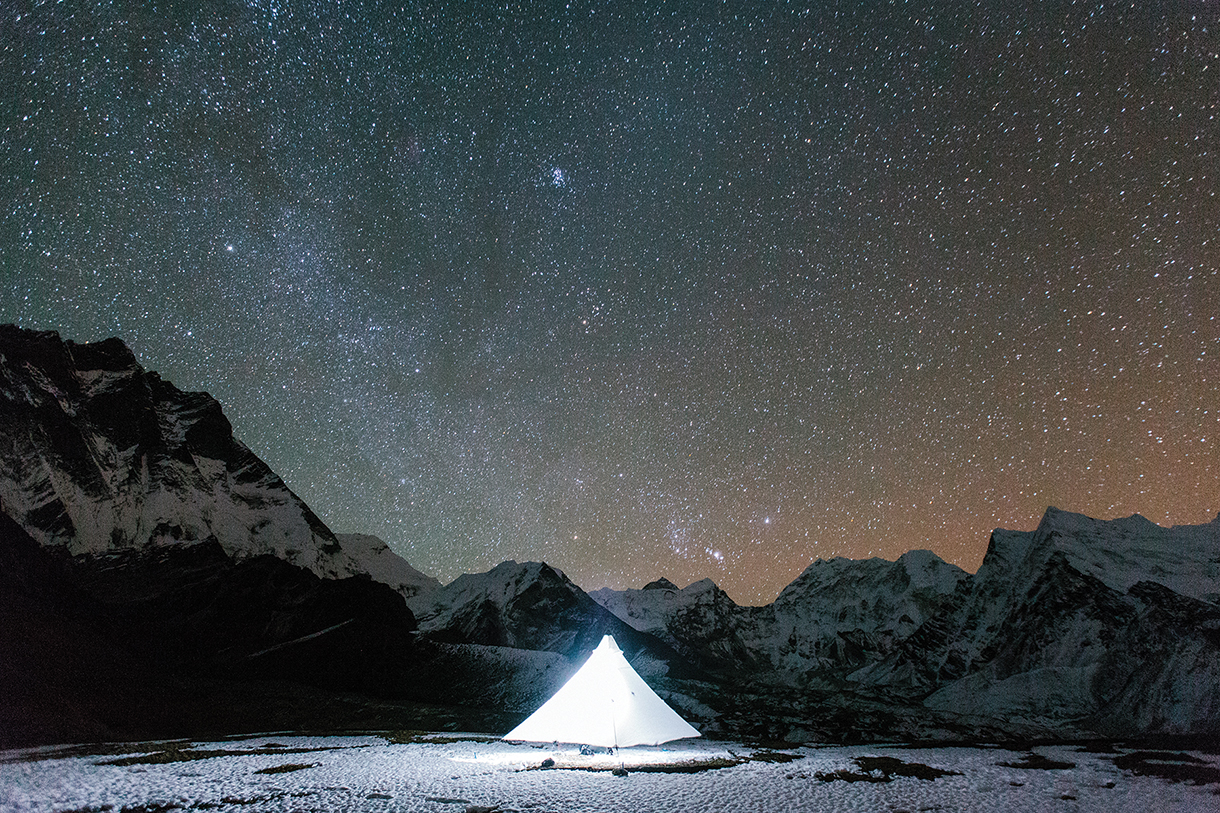
Luckily there’s a secret hiding in plain sight. Nestled among giants lies the hidden Himalaya—the 6,000-meter “trekking peak” climbs often overlooked by both trekkers and climbers alike, perhaps due to their confusing classification.
The Nepal Mountaineering Association describes this collection of around 30 specific six-thousanders as “trekking peaks” to provide differentiation from Nepal’s “expedition peaks”—you know their lore: Everest (the Nepali name for it is Sagarmāthā; the Tibetan name is Chomolungma), as well as Lhotse, Ama Dablam, Annapurna, and more.
Nepal’s trekking peaks, which often possess technically demanding sections that require specialized equipment, are not simply walk-ups as their nomenclature would imply; hikers are thus deterred from attempting them. Nor does their classification imply any actual climbing, so many mountaineers fail to consider them as objectives worthy of their resources. As such, most of these peaks tend to exist in a realm of ambiguity and obscurity for all but the most astute Himalayan adventurers.
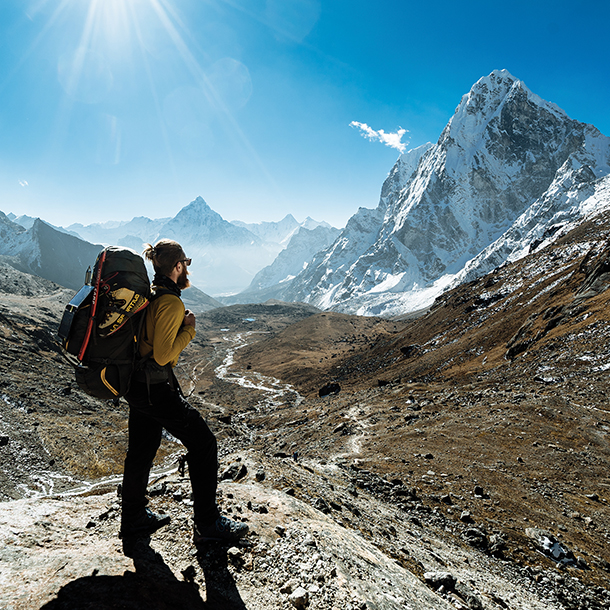
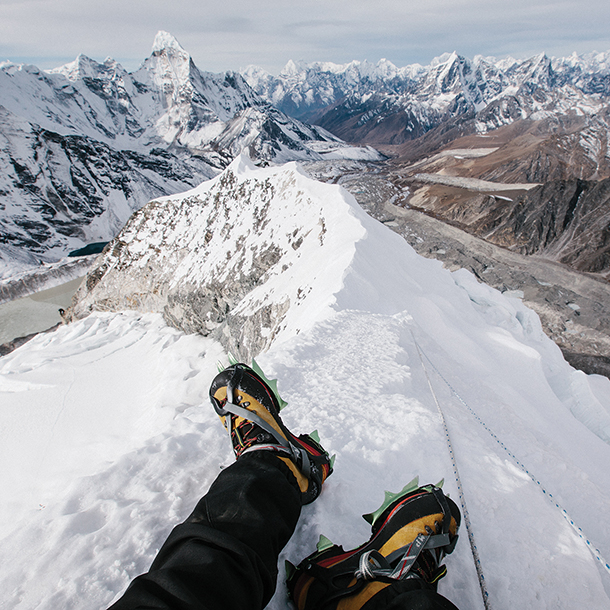
Transcendent Expeditions
Enter my company Transcendent Expeditions (transcendentexpeditions.com), launched this year, specializing in curating trips to climb these mountains—which, in the Khumbu region of Everest includes, but is not limited to, Imja Tse, Lobuche East, and Kyajo-Ri—providing a legitimate high-altitude Himalayan experience, albeit a truncated one accessible to both novice and veteran mountaineers.
In fact, while at camp and on route, it’s possible that our only other company is prolific alpinists who are using the mountain to acclimatize for significantly more committing objectives. An examination of what makes these trekking peaks unique also begs the question, “Why don’t more people climb them?”
In many regards, 6,000 meters is a sweet spot for Himalayan climbing. Peaks at that altitude are about as high or higher than any point in North America (Alaska’s Denali at 6,190 meters is the highest in the United States)—so they facilitate an excellent opportunity to test your physiology and psyche at high altitude—but they’re not so high that they require months of acclimatization like the eight-thousanders do.
A fit person, accustomed to mountain movement and on a rapid acclimatization schedule, can realistically approach and climb Lobuche East (6,119 meters / 20,075 feet)—located a day’s walk southwest of Everest Base Camp (EBC)—and then return in as little as two weeks.
Though the elevation profile of Nepal’s trekking peaks is very similar to that of a Denali climb, only a day or two will be spent on glaciers or climbing, compared to all of it on the remote Alaskan expedition.
Instead, the majority of approach and acclimatization for trekking peak climbs is facilitated by a European-style infrastructure of fully catered “tea houses,” which are essentially mountain lodges located along the trekking routes. These modest but comfortable establishments provide adventurers with hot meals, cozy rooms, and occasionally warm showers.
That infrastructure—along with support from equipment porters (not necessarily Sherpa, which is the name of an ethnic group of people indigenous to Tibet and not always synonymous with high-altitude workers or guides)—allows climbers to travel relatively light, carrying only their day pack with personal items and clothes. This conserves energy for the climbs, supports Nepalis with good jobs that have competitive wages, and makes the overall experience of approaching the mountain significantly more accessible and enjoyable than it would be otherwise.
All those factors considered, climbing trekking peaks in Nepal is most akin to climbing “side peaks” while trekking through the Alps, though everything in the Himalaya is quite a bit higher—and obviously, Tibetan culture creates the distinct atmosphere.
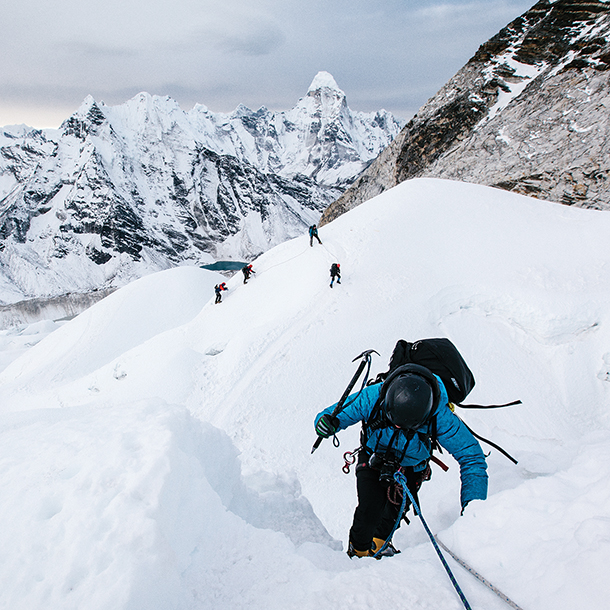
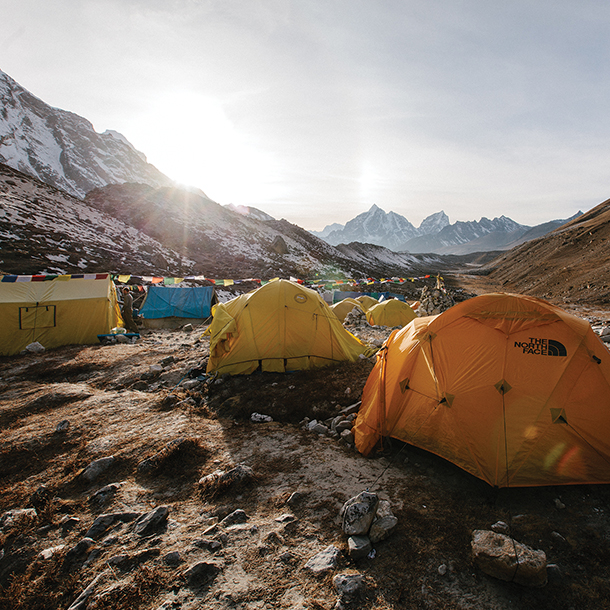
Nepal’s Trekking Peaks
The Everest area, often referred to as the Khumbu, is usually reached by fixed-wing air travel from Kathmandu. The 45-minute, stunningly scenic flight, aboard a short takeoff and landing (STOL)-capable de Havilland Canada DHC-6 Twin Otter, concludes with an epic descent onto a precarious airstrip at the infamous Tenzing-Hillary Airport in Lukla—one of the most dangerous airports in the world.
The village of Lukla rests at an elevation near 2,860 meters (9,380 feet)—about the same as Silverton, Colorado—though the first day’s walk drops a significant amount of altitude. You’ll regain it on day two and continue gradually upward until your peak climb.
The second night is spent in Namche Bazaar—with multiple bakeries, banks, and gear shops, this will be the last semblance of civilization for a while. Stock up on TP; pull out any additional cash you may need; and watch an Everest movie at the Liquid Bar. From here, itineraries diverge, depending on what peak you will climb.
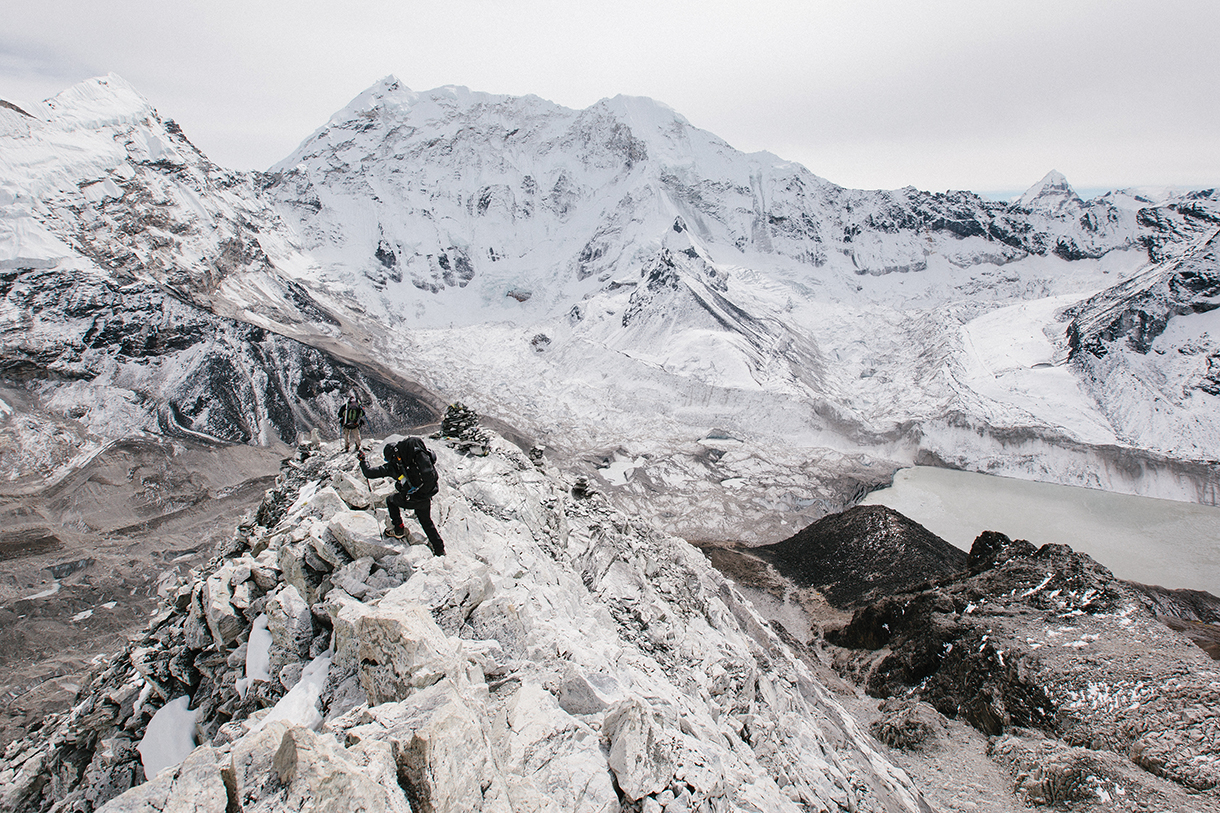
Imja Tse (6,189 meters / 20,320 feet)
Base camp is a seasonal fixture, situated alongside a moraine that separates the establishment from a slate-colored glacial lagoon. The place is alive with altitude workers, camp cooks, and climbers. The experience feels more authentic than a trip to EBC as a trekker.
Ascent begins with a 1 a.m. wake-up call from your guide. Breakfast is served in bed. A simple porridge, boiled eggs, and yak cheese—it’s not luxurious fare, but it gets the job done. Once suited up and kitted out, it’s time to leave camp. A hike along the moraine leads to a rocky slope and the beginning of the climb. The first few hours are spent scrambling up; as the sun nears the horizon, you reach the glacier, strap on crampons, and rope up with your team. Now the mountaineering begins.
A meandering path is tracked out across the glacier. Equal spacing and steady movement throughout the rope team help to mitigate the potential risk of a crevasse fall until you reach the headwall. This imposing 300-meter (1,000-foot) wall of ice presents the crux of the climb. The rope team breaks apart, and each climber attaches themself to the fixed lines using a mechanical ascending device called a jumar. This method allows for upward progress at an individualized pace. Oxygen is scarce, so reach deep and rally hard. To stand on the summit will require all that you are. If it starts to feel too hard, just remember that whether you summit or not, a good night’s rest awaits at the end of the day.
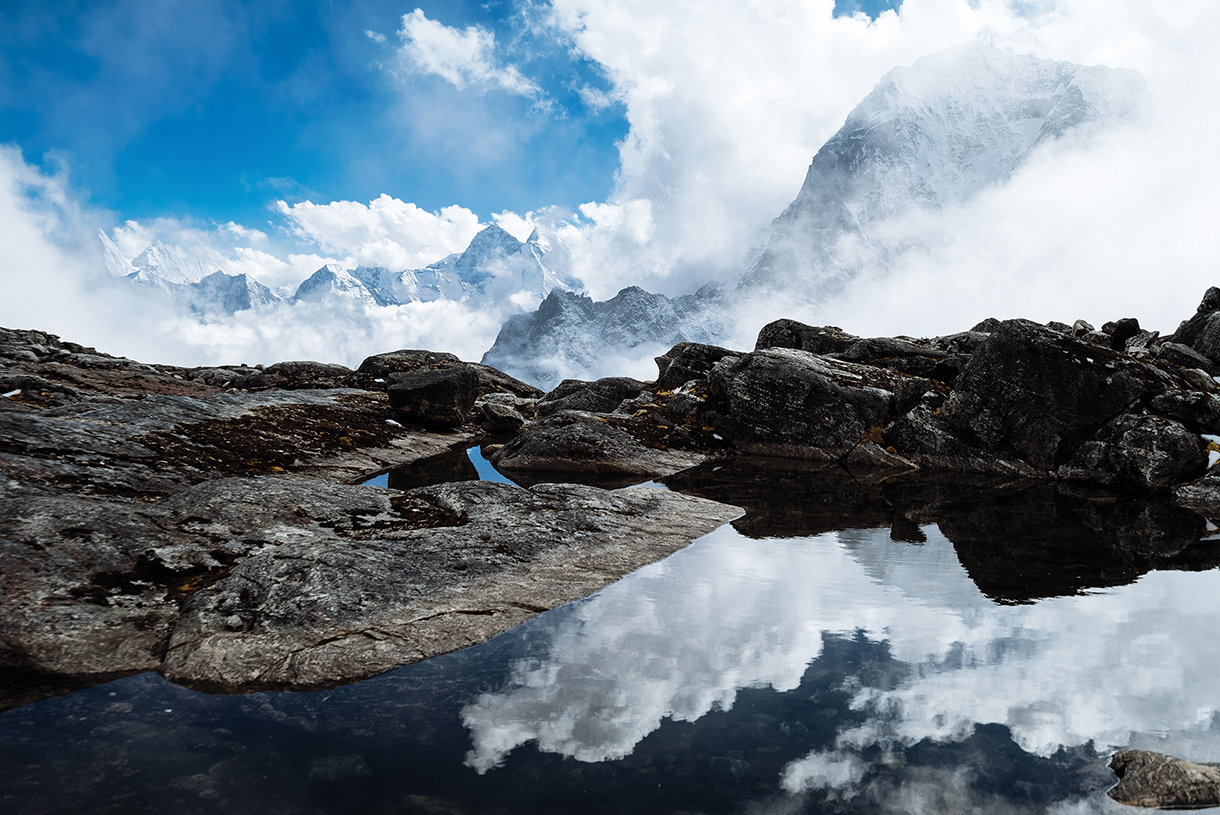
Lobuche East (6,119 meters / 20,075 feet)
Base camp is reached by a three-hour hike along goat paths that wind up from the village named for the peak that towers above it. Tents are established on a flat rocky outcrop next to a tarn, which provides a source of freshwater for drinking and cooking. Compared to the bustle of Imja Tse BC, this is a tranquil retreat.
An alpine start, along with the usual preparations, leads to climbing straight out from camp. The first section is characterized by mellow slabs of rock, along with the occasional boulder hop. Halfway between your tent and the summit, you’ll don crampons, grab your axe, and rope up with your team. Mellow but exposed glaciated snow slopes define the next part of the climb, eventually giving way to a steep, snowy headwall dotted with fixed lines.
The summit is gained atop a knife-edge ridgeline. Your reward: views of Everest to the northeast; Ama Dablam to the south; and the imposing north face of Cholatse to the west.
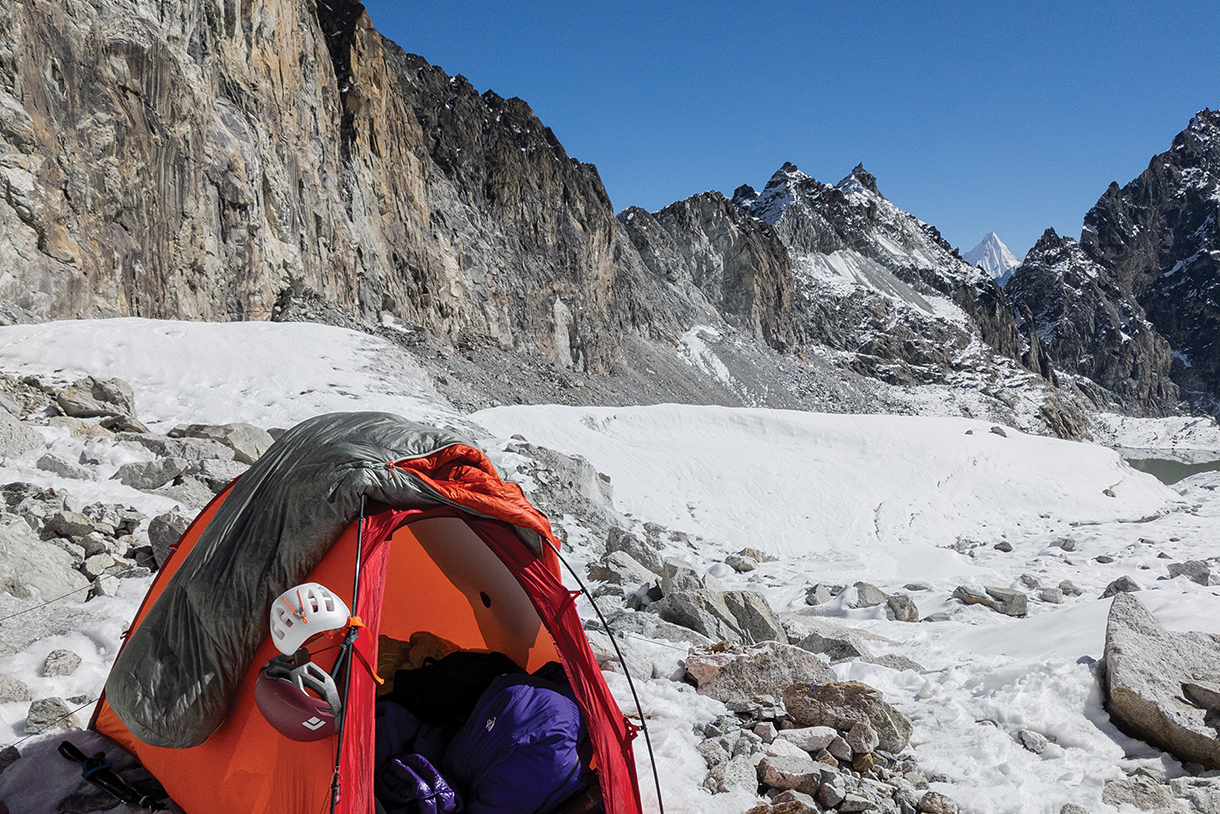
Kyajo-Ri (6,186 meters / 20,295 feet)
As the highest point of the range that separates Gokyo Valley from its infrequently visited neighbor to the west, Kyajo-Ri commands an impressive point of view. Though it is centrally located in the most popular mountain region of Nepal, it boasts one of the wildest venues in the Khumbu. Access is afforded by a three-day, mostly trailless walk up a series of hanging valleys, which are completely isolated from the region’s typical trekking circuit. When you’re up there, you’ll feel totally alone—because you are.
This is by far the toughest mountain on this list, but it’s also the most rewarding. A true expedition feel, superb technical climbing, and impeccable summit views make this one a worthy reach.

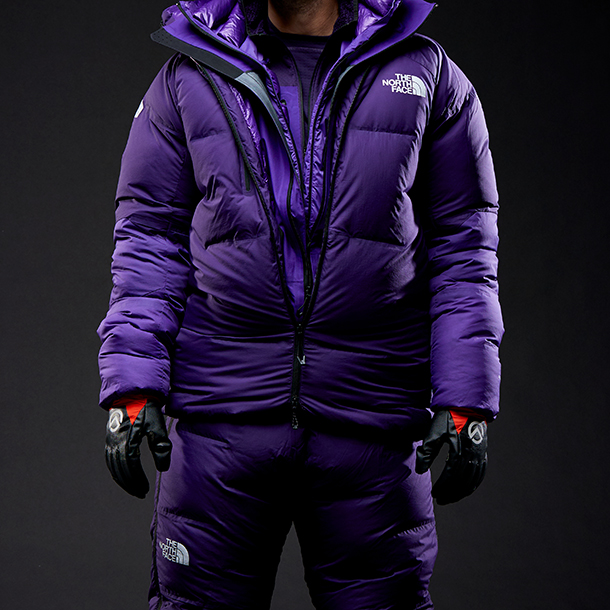

Gear Up
The North Face Advanced Mountain Kit (AMK) (thenorthface.com) apparel represents a radical leap forward in technical clothing systems designed for alpine climbing. Created in conjunction with the brand’s athletes, who represent some of the best climbers on the planet, five new fabric and construction technologies were developed to ensure that every piece of this collection is at the tip of the spear. The L1 DotKnit crew ($175) and pant ($125) move moisture away from the body. The L2 pullover ($275) and pant ($225) utilize FUTUREFLEECE to provide incredibly breathable, active insulation during highly aerobic activity in cold conditions. The L3 pant ($500) and pullover ($650) use 50/50 down to provide additional breathable warmth. The L5 FUTURELIGHT jacket ($700) and pant ($600) are the most breathable waterproof layers that TNF has ever created. Finally, the L6 parka ($1,000) and pant ($800) are essentially a wearable sleeping bag stuffed with ultra-premium, 1000-fill power down insulation. The entire system was designed to excel at climbing 6,000-meter peaks all the way to the Roof of the World. In fact, TNF athlete David Goettler used the AMK during his May 2022 Everest no-O2 summit.
In addition to the apparel system, The North Face created a special series of equipment designed to the same pinnacle performance standards as the rest of the AMK. The Superlight 10 sleeping bag ($1,350) is comfort rated to 10 degrees, yet the regular length only weighs 1 pound, 10 ounces—which is very likely the highest warmth-to-weight ratio of any sleeping bag ever commercially produced.
That incredible ratio is achieved with a generous amount of 1,000-fill down insulation and an aluminized nylon shell that actively reflects heat back to the body. It features a boxy cut around the torso, allowing a down parka to be worn inside of it, which can help the bag punch way above its weight during the coldest nights of your expedition. FUTURELIGHT panels around the hood and footbox protect vital areas of the bag from tent wall condensation and a center zip makes anchoring during an open bivvy a cinch.




